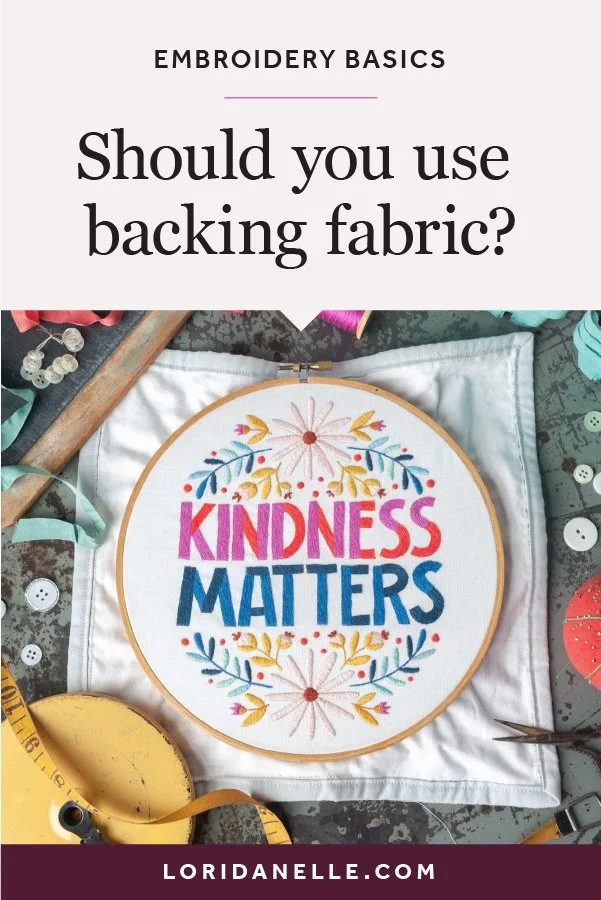How Using Backing Fabric Will Improve Your Next Embroidery Project
I’ve dabbled in embroidery and other needle arts since I was a little girl. I remember my Grandma setting me up with a tea towel and cute iron-on transfer, then stitching up it up with my wobbly beginner stitches.
But since I picked up embroidery again about a year ago I’ve discovered some little tips and tricks that I think have really upped my stitching game! The first one is backing fabric.
I have found adding a backing fabric to be so helpful, because it increases your ability to place your needle — and thus the ends of your stitches — EXACTLY where you want to, increasing the crispness of your edges on shapes.
Background Fabric
Obviously, your project will always have a background or ground fabric. Depending on the project it may be seen a lot, or be completely hidden by stitches. Regardless of whether or not it will be seen, the fabric chosen is very important to consider since it becomes the structure to which you build your project on. You definitely don’t want to cheat yourself with poor quality fabric!
If you were building a house, think about the fabric you start with as the foundation and the stitches as the house you want to build. We’ve all probably heard the analogy about building your house on sand or rock. This is a little bit the same — we don’t want to stitch on sand!
Lining or Backing Fabric
As for Backing Fabric, this is another piece of fabric that sits right behind your background fabric before you ever start embroidering, so that you are stitching through both pieces of fabric once you start.
This shouldn’t be confused with the silky-satin polyester lining fabric used in clothing construction, or others sold as “interfacing.” This is fabric that will add to the strength of your foundation as you stitch.
Why use Backing Fabric
A few reasons you may choose to line your embroidery project with backing fabric:
Your background fabric is lighter and/or semi-transparent, and your stitches from the back-side would shine through to the front.
Your embroidery stitches are dense — for example: you’re filling large areas with satin stitches — or your thread is a heavier weight than is typical. By adding a backing fabric you’ll add an extra layer of support.
Your background fabric is not densely woven or is unevenly woven. Looser fabric can give you a beautiful finished look, but if not lined, the weave of the fabric will dictate where your stitches lay.
Think about it this way: if you’re filling in a shape with satin stitches, a loose weave fabric won’t give you the structure to establish hard edges on your shape because you’re working with larger gaps instead of a higher quantity of smaller spaces with a tight weave. A tight or close weave gives you the structure needed for precise placement of each of your stitches.
Loose Weave vs. Tight Weave
To add a backing fabric, you can go the easy route and just sandwich the two layers in between your hoop, or you can opt to secure the edges by either stitching them with a serger, or binding them with bias tape. Either way, it’s completely up to you and what suits your end product the best.










